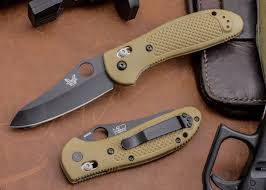Let’s be honest gents, a wrist watch is more an item of
jewelry these days than a functional timepiece as it once was. We have the time
and so much more on our phones, computing devices, and in our car. You may
think your black clad military looking watch sets you apart from the stainless
Rolex dive watches, but it doesn’t. Yep, still jewelry.
One such watch is the black clad Suunto Core. Suunto wrist
watches are a familiar site on just about any adventure, along with a few other
similar watches such as the Casio Pathfinder. These watches are in a category
called ABC (A=Altitude B=Barometer C=Compass) and are also referred to as
wristop computers. Suunto released the Core watch back in 2007 and there have
been 25 different versions since. All of them have the same functions, just
cosmetic differences such as wrist strap and bezel.
Featured here is the Suunto Core Classic. Entirely black,
plastic moving bezel, and elastomer wrist strap. The only noteworthy
improvement over the years with the Core Classic, is the switch from a painted
metal bezel to a plastic one. I have to think the metal bezel will hold up
better under abuse, but the black plastic holds its good looks over time.
Remember, with watches it’s all about presentation and perception. Jewelry.
For me, the Suunto Core’s simple looks make its operation
both visually and instinctively pleasant to use. Toggling through modes such as
compass, altimeter, and time options, with a touch of button. Entering a menu
tree with a simple long press of the same button. On screen ques make button
and option selections idiot proof. The Core’s chassis and face is relatively
low profile and combined with a well thought wrist strap, fits and stays put. A
nice touch, the wrist strap keeper fits positively into the wrist strap,
preventing movement readjustment and tinkering.
As cool as the black on black scheme looks, it makes reading
the watch more difficult than I anticipated. I expected a better contrast
adjustment. I was hoping for more brightness and contrast after replacing the
battery, no love. Using the watch here in Colorado, the altimeter is the
biggest disappointment. With Colorado’s ever-changing weather, the barometric
based altimeter is consistently off by thousands of feet. There is an option to
plug in altitude reference points during each new adventure, but I’m not that
geeked-up.
All in all this is a well-made watch and priced
appropriately. The Core series lacks real ruggedness and for that it belongs in
town and not in the field. Suunto however does make it’s Vector series, a
rugged multi-function watch which will hold up to some abuse on any adventure.
Suunto Core
$299
Sunnto Vector
$199




